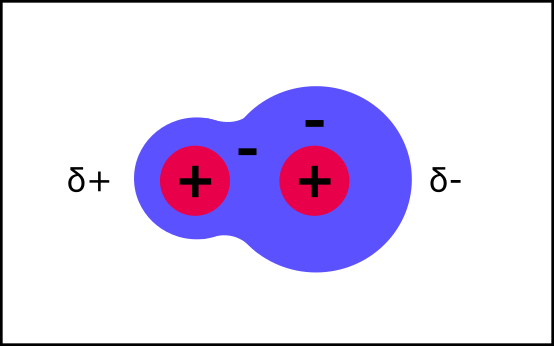Coronavirus Spike Protein
Proteins: Practical Polymers
Protein molecules are the workhorses of biological systems - they fulfill a dizzying number of functions. They can function as enzymes, signalling molecules, structural elements, and many more roles besides.
This is only possible because of their highly diverse structures, which are created by interactions between the R groups of different amino acid residues in their polypeptide chains.
Key Terms:
Before we delve into the intricacies of protein structure, let's define some key terms:
Amino Acid: The basic building block of proteins, consisting of a central carbon atom bonded to an amino group, a carboxyl group, a hydrogen atom, and a side chain (R group). The side chain is the bit that varies between different amino acids.
Peptide Bond: The covalent bond formed between the amino group of one amino acid and the carboxyl group of another amino acid during protein synthesis.
Residue: The amino acid after it has been joined to a chain by (a) peptide bond(s).
Protein / Peptide / Polymer: A peptide is a short chain of amino acids linked by peptide bonds. Because it is made from linking similar submits together, it is an example of a polymer. A polypeptide is a long peptide chain. A protein is a very long polypeptide, often with hundreds of amino acid residues.
Levels of Protein Structure: The hierarchical organisation of protein molecules, including primary, secondary, tertiary, and quaternary structures.
Electrostatic Interactions: Polar and charged groups can form electrostatic interactions with water molecules and each other. These are very important for protein structure, binding, and function.
Hydrogen Bond: A weak electrostatic attraction between a hydrogen atom bonded to an electronegative atom (e.g., oxygen or nitrogen) and another electronegative atom. Protein secondary structures are stabilised by hydrogen bonds.
Ionic Bonds: Electrostatic interactions between charged groups. Important for protein tertiary structures, binding and function.
Hydrophobic Interactions: Non-polar groups can’t form electrostatic interactions with water. Avoiding water leads them to interact with each other. These interactions are important for protein tertiary structures, binding, and for locating proteins within membranes.
Disulfide Bonds: Covalent bonds formed between the sulfur atoms of two cysteine residues within a protein molecule. These are important for protein tertiary and quaternary structures.
The amino acid Asparagine. The amino group is shown sticking up at the top. The carboxyl group is to the right, and the R group (CH2-CO-NH2) is sticking out to the left.
General Structure of an Amino Acid:
Amino acids are organic compounds composed of a central carbon atom (the alpha carbon) bonded to four groups: an amino group (NH2), a carboxyl group (COOH), a hydrogen atom (H), and a side chain known as the R group.
The R group varies among different amino acids. R groups can be hydrophobic, polar, or charged. The size, shape and potential for electrostatic and covalent interactions determine how each amino acid residue interacts with its environment.
Synthesis and Breakdown of Polypeptides:
During protein synthesis, amino acids are linked together through peptide bonds to form peptides and proteins.
Peptide bonds are formed through a condensation reaction between the amino group of one amino acid and the carboxyl group of another amino acid, resulting in the release of a water molecule.
Conversely, hydrolysis breaks peptide bonds by adding a water molecule, separating the amino acids.
Levels of Protein Structure:
Proteins exhibit four levels of structural organisation:
Lipocaine protein. Its secondary structures of alpha helix (yellow) and beta sheet (blue) are packed together to form a tertiary structure.
Primary Structure: The linear sequence of amino acid residues in a polypeptide chain. The primary structure can be written down as a simple sequence of letters where each letter codes for a type of amino acid.
Secondary Structure: Repeated patterns of folding involving the polypeptide backbone. The most common types of secondary structure are alpha helices and beta sheets. Secondary structures do not directly involve R groups; they are stabilised by hydrogen bonding beween atoms of the polypeptide backbone.
Tertiary Structure: The overall three-dimensional shape of a single polypeptide chain. This usually involves packing elements of secondary structure together to form the overall structure. Tertiary structure is determined by interactions between amino acid side chains. These often include hydrophobic interactions, and can also include hydrogen bonding, disulfide bonds, and ionic bonds.
Quaternary Structure: Arrangement of multiple polypeptide chains (subunits) in a protein complex, stabilized by the same types of interactions as tertiary structure.
Structure and Function of Globular Proteins:
Many proteins are compact, roughly-spherical proteins with hydrophilic surfaces and hydrophobic interiors. These are known as globular proteins. Examples of globular proteins include enzymes, transport proteins, and regulatory proteins.
Haemoglobin: A conjugated protein with a quaternary structure of four globular protein subunits. Each subunit contains a heme prosthetic group, responsible for oxygen transport in red blood cells.
Amylase: The enzyme in saliva that catalyses the breakdown of starch. This protein has one chain with three tertiary domains.
Insulin: A peptide hormone consisting of two polypeptide chains connected by disulfide bonds. Insuling regulates blood sugar levels by promoting glucose uptake by cells. Insulin is synthesised as a single chain, and cut into two chains during processing.
Summary:
Amino acids are the basic building blocks of proteins.
They are composed of a central carbon atom bonded to an amino group, a carboxyl group, a hydrogen atom, and an R group (side chain).
Peptide bonds form between amino acids during protein synthesis, linking them together to form peptides and polypeptides.
Proteins exhibit four levels of structural organisation: primary, secondary, tertiary, and quaternary structures.
Protein struture is crucial for their function.
Many proteins are globular proteins, with hydrophobic interiors and hydrophilic exteriors.
Proteins can fulfill many functions, from structural roles to acting as enzymes, signalling molecules or membrane channels. And many other things besides.
So what type of molecule is made from amino acids and acts as a biological catalyst? Yes it’s a protein.
If this post has been helpful, please like ❤️ below and share with your friends.

























